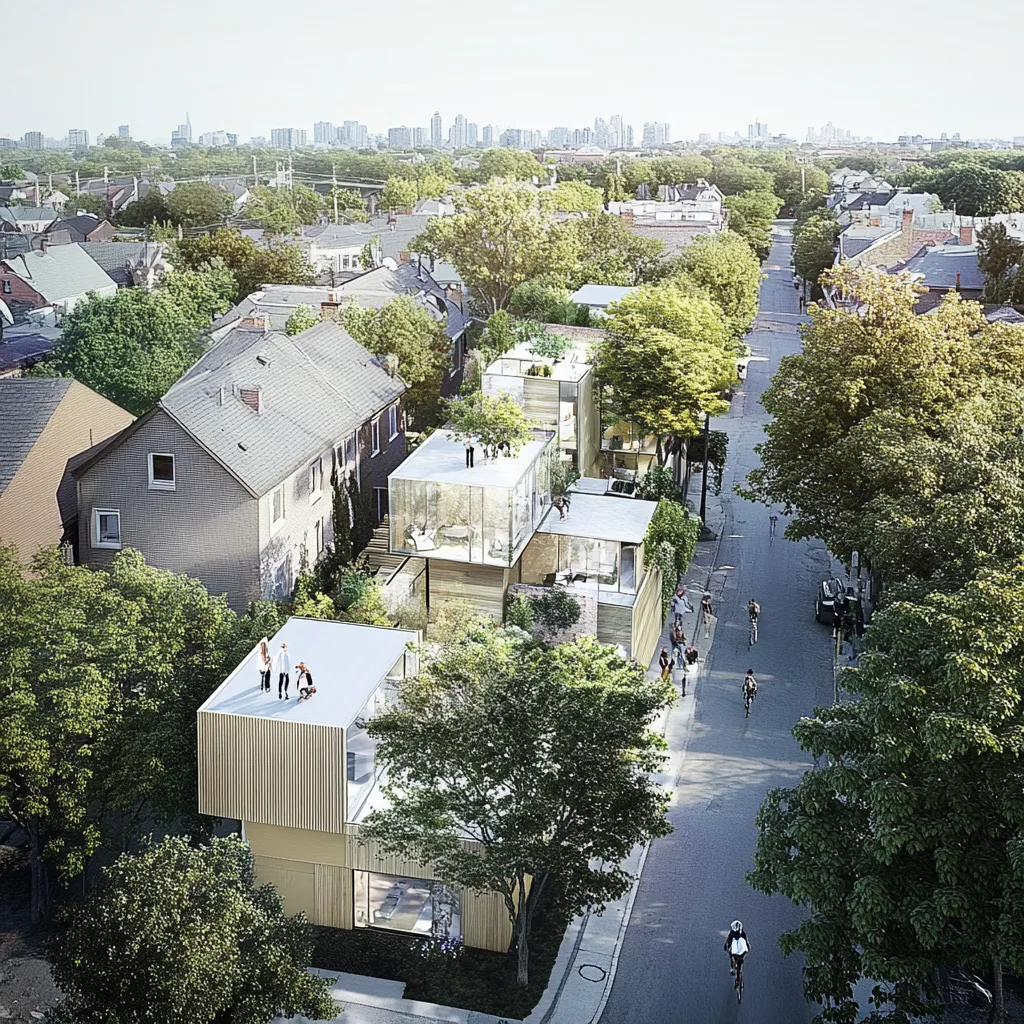Housing Market Revolution: How Laneway Suite Permits Are Reshaping Urban Real Estate Investment Strategies
As global housing affordability reaches critical levels across major metropolitan areas, a quiet revolution is unfolding in urban backyards and forgotten alleyways. The surge in comprehensive laneway suite permits applications and streamlined laneway suite permits processes represents more than a planning trend, it signals a fundamental shift in how cities address housing shortages while creating new investment opportunities for property owners navigating today’s volatile real estate markets.
This urban transformation mirrors patterns seen in major global cities, where innovative housing solutions are becoming essential tools for economic growth and community development. Laneway suites represent the secret to expanding urban living space in ways that traditional high-rise development cannot match, offering scalable solutions that preserve neighborhood character while addressing density needs.
The Numbers Behind the Movement
Recent data from major North American cities reveals the economic impact of laneway suite development reaching unprecedented levels. In Toronto alone, over 200 building permits were issued within three years of legalization, with cities like Vancouver reporting more than 4,000 approved units since 2009. These figures represent billions in real estate value creation and thousands of new rental units entering tight housing markets.
Property owners are discovering that laneway suite permits unlock rental income potential averaging $2,500 to $3,500 monthly in urban markets, with construction costs typically ranging from $300,000 to $600,000. The mathematical equation proves compelling: well-executed laneway developments generate 15-22% returns on investment when combining rental income with property appreciation, significantly outperforming traditional investment vehicles in current market conditions.
Market analysts note that properties with permitted laneway suites command 20-30% premiums over comparable single-unit properties, reflecting growing buyer demand for flexible housing arrangements and income-generating potential. This value appreciation extends beyond individual properties, contributing to broader neighborhood revitalization and economic development initiatives.
Regulatory Evolution and Municipal Response
Cities worldwide are recognizing laneway housing as a policy tool for addressing multiple urban challenges simultaneously. Municipal governments are streamlining laneway suite permits processes, reducing approval timelines from years to months while maintaining safety and zoning compliance standards.
Vancouver’s success model demonstrates how progressive permitting policies can accelerate housing development without compromising urban planning objectives. The city’s simplified application process and pre-approved design templates have enabled rapid scaling, with laneway development contributing significantly to rental housing supply targets.
Calgary and other North American cities have implemented similar frameworks, creating standardized laneway suite permits requirements that provide clarity for developers while protecting community interests. These regulatory improvements reflect growing municipal recognition that laneway housing represents sustainable urban densification that works within existing infrastructure rather than requiring expensive new development.
Global Urban Housing Trends
The laneway suite phenomenon reflects broader international trends toward micro-housing and adaptive urban development. Cities from Melbourne to Berlin are implementing similar policies, recognizing that traditional zoning restrictions limit creative solutions to housing affordability challenges.
European cities with historic urban cores have pioneered courtyard and mews housing that serves as precedent for North American laneway development. These international examples demonstrate how small-scale infill housing can maintain neighborhood character while significantly increasing residential density.
Asian metropolitan areas like Tokyo and Hong Kong have long maximized urban space through innovative small-unit development, providing models for efficiency and functionality that influence contemporary laneway design standards. These global perspectives inform best practices for permitting processes and architectural requirements.
Technology and Construction Innovation
Modern laneway suite construction benefits from advances in modular building technology, sustainable materials, and smart home systems that maximize functionality within compact footprints. Builders report that prefabricated construction methods can reduce laneway suite development timelines by 30-40% while maintaining quality standards.
Energy efficiency requirements in laneway suite permits increasingly reflect climate change objectives and building performance standards. Many municipalities now require Step Code compliance or equivalent energy efficiency measures, driving innovation in heating, cooling, and insulation technologies specific to small-space construction.
Digital permitting platforms are revolutionizing how laneway suite permits applications are processed, with some cities implementing online submission and review systems that provide real-time status updates and automated compliance checking. These technological improvements reduce administrative costs while improving applicant experience.
Economic Multiplier Effects
Laneway suite development creates economic benefits extending beyond individual property owners and renters. Construction activity generates employment for architects, builders, and trades workers while supporting local suppliers and service providers. Economic studies indicate that each laneway suite project typically generates $50,000-$80,000 in local economic activity beyond direct construction costs.
Neighborhood businesses benefit from increased residential density as laneway residents contribute to local commercial activity without requiring new infrastructure investment. This organic commercial growth supports municipal tax bases while enhancing community viability.
Financial institutions are developing specialized lending products for laneway development, recognizing market demand for construction financing that accounts for unique characteristics of laneway projects. These financing innovations make laneway development accessible to broader property owner demographics.
Policy Implications and Future Outlook
Housing policy experts view laneway development as a model for addressing affordability challenges without the social disruption associated with large-scale redevelopment projects. The relatively modest scale of laneway construction allows for gradual neighborhood evolution rather than dramatic transformation.
Climate policy considerations increasingly favor laneway development due to reduced environmental impact compared to greenfield development. Laneway housing utilizes existing infrastructure while typically incorporating higher energy efficiency standards than older housing stock.
Municipal planning departments report that laneway suite permits applications often serve as catalysts for broader neighborhood improvements, with property owners investing in landscaping, accessibility upgrades, and aesthetic enhancements that benefit entire communities.
Investment Market Response
Real estate investment funds are beginning to recognize laneway-enabled properties as distinct asset classes with predictable returns and stable tenant demand. This institutional recognition provides market validation for individual investors considering laneway development projects.
Property management companies are developing specialized services for laneway rental units, creating professional management infrastructure that supports scaling of laneway housing development. These services address unique aspects of managing small-unit rentals in residential neighborhoods.
Insurance companies have adapted policies to address laneway housing, providing coverage options that account for mixed residential use and rental income protection. These insurance innovations remove barriers that previously complicated laneway development financing.
Global Economic Context
Laneway housing development occurs within broader economic trends toward urban intensification and housing affordability crisis response. Central bank monetary policies affecting construction costs and financing availability directly impact laneway development economics.
Immigration and population growth in major urban centers create sustained demand for alternative housing forms, with laneway units often serving newcomers seeking affordable accommodation in established neighborhoods. This demographic dynamic supports long-term rental demand stability.
Economic uncertainty in traditional real estate sectors makes laneway development attractive for investors seeking diversified property portfolios with multiple income streams and flexible use potential. Market volatility emphasizes value of adaptive housing solutions that can respond to changing economic conditions.
The transformation of urban laneways from utilitarian spaces to valuable residential assets represents a significant evolution in how cities approach housing challenges while creating new economic opportunities. As global urbanization continues and housing affordability remains a pressing concern, laneway suite permits and development represent practical solutions that benefit individual property owners while contributing to broader urban sustainability and economic development objectives.





